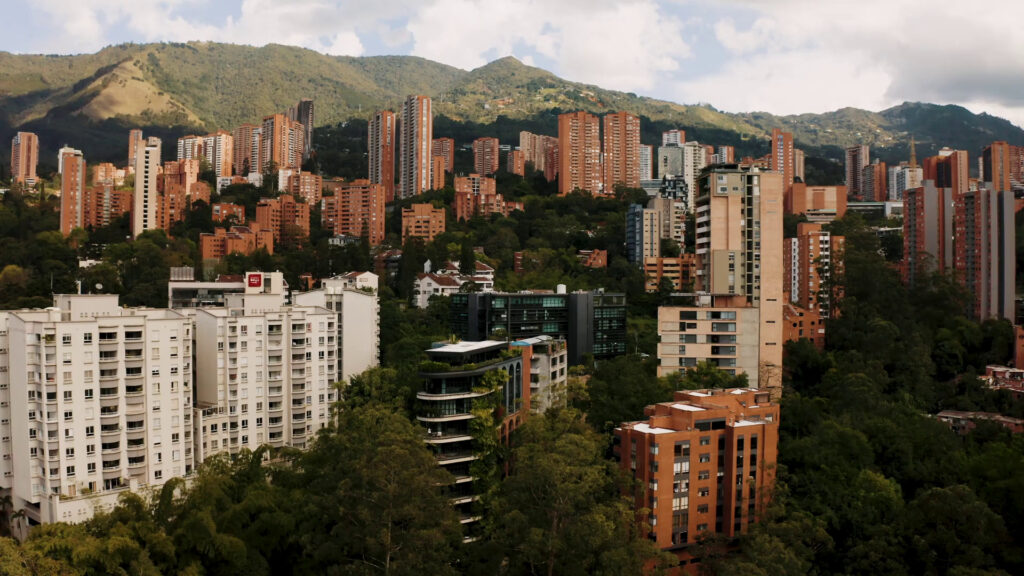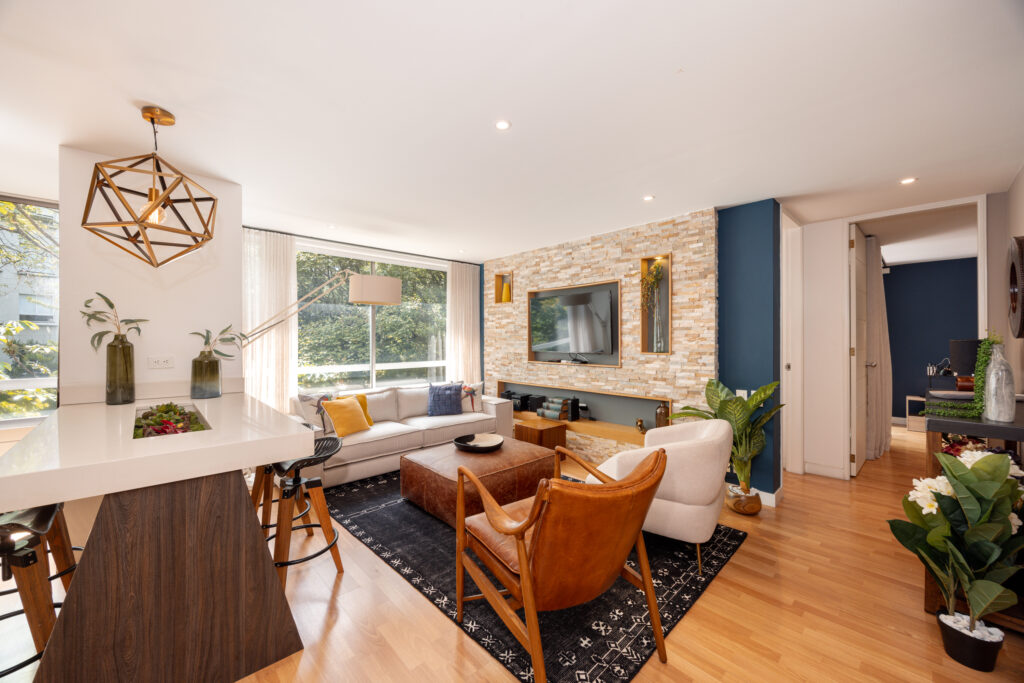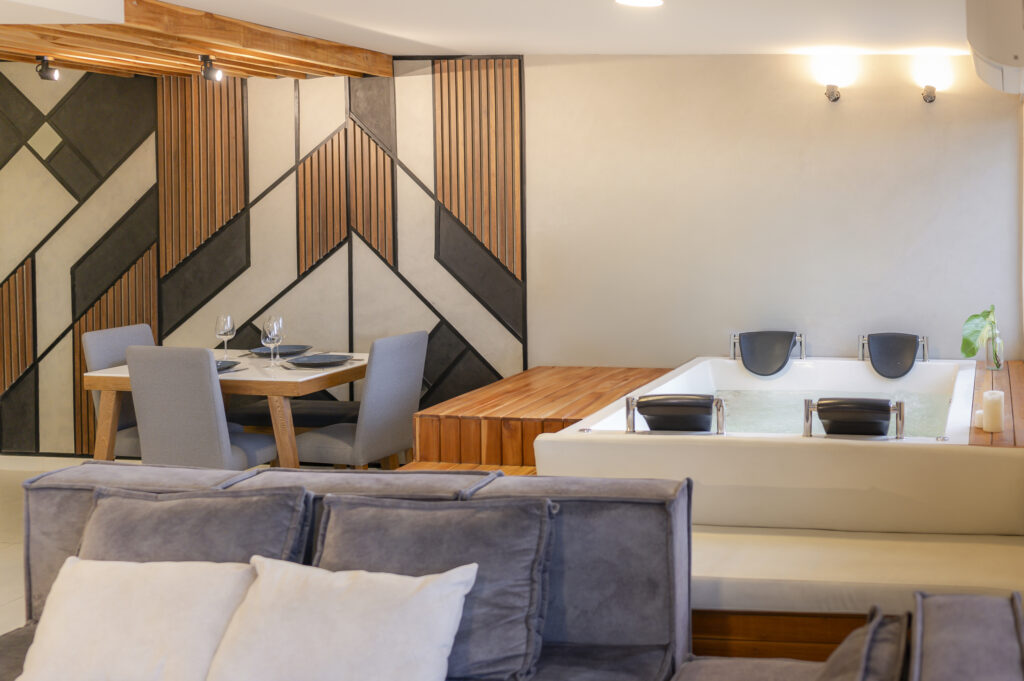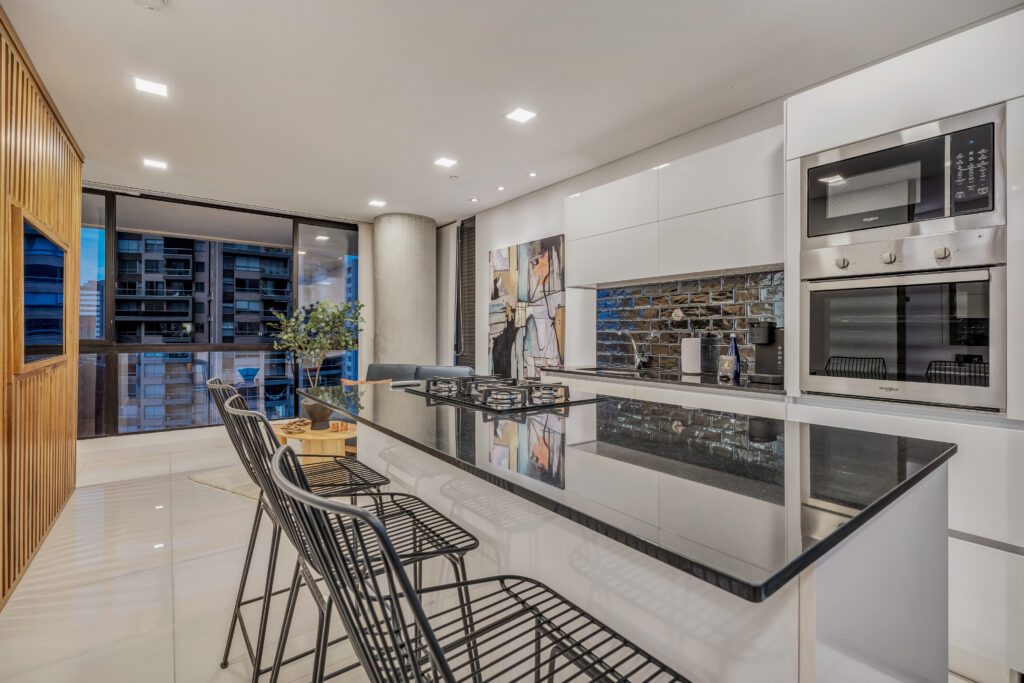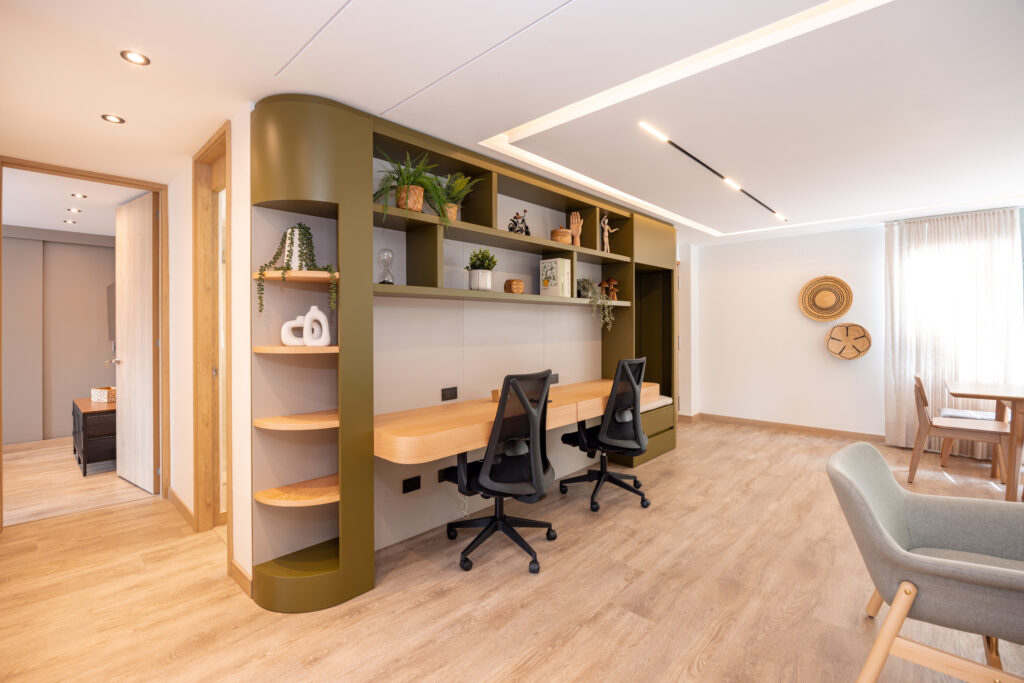If you are visiting Medellin, then the barrio Comuna 13 has more than likely been recommended to you. This is because Comuna 13 is one of the most popular tourist destinations in the city, known for its vibrant street art, lively atmosphere, and friendly locals.
However, Comuna 13 wasn’t always this way. On the contrary, it was once one of the most dangerous places in Medellin, plagued by violence and crime.
How did Comuna 13 go from being one of the most dangerous places in Medellin to a top tourist destination? In this article, we will discuss the history and transformation of Comuna 13, so read on!
History of Comuna 13
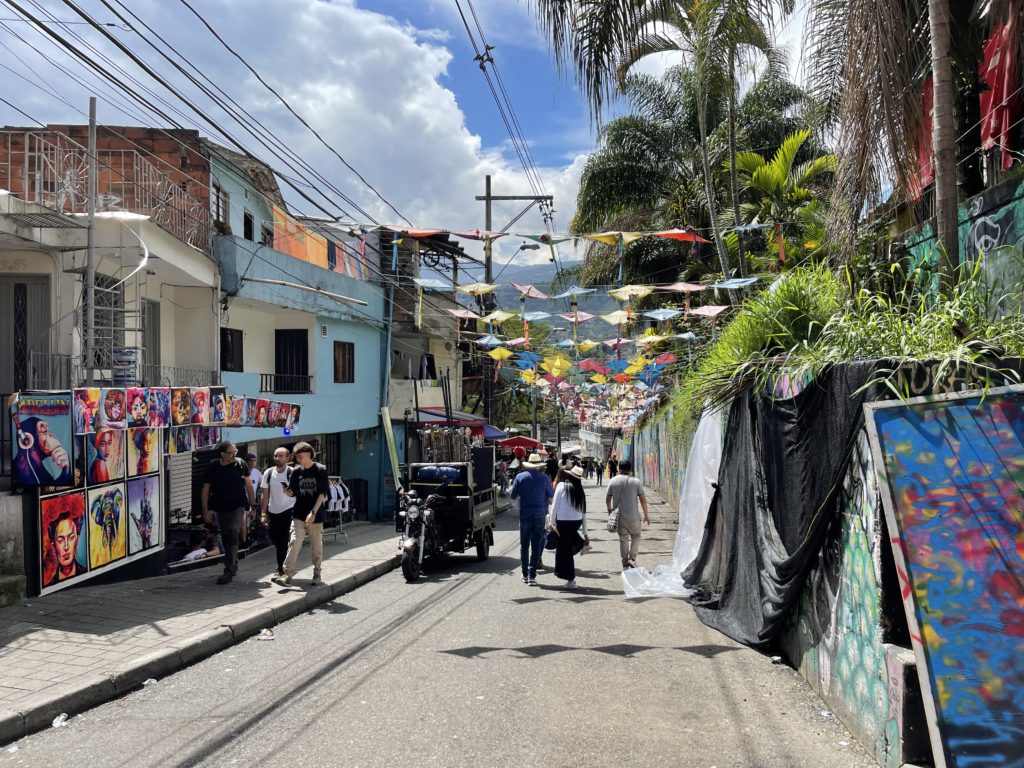
Before being a hillside of residential homes and street art, Comuna 13 was first a place for agriculturists in the 1800s. However, as Medellin expanded, Comuna 13 slowly became more populated. By the 1950s, it was considered a lower-class neighborhood home to many factory workers.
With low income and a lack of resources, residents of Comuna 13 turned to crime and violence to get by. In the 1980s and 1990s, Comuna 13 became known as one of the most dangerous places in Medellin due to drug trafficking, extortion, murder, and kidnapping.
But why was Comuna 13 seen as a place for criminals and gangs?
One of the reasons was because of its location. Comuna 13 is situated on a hillside, making it easy for criminals to spot the police and avoid them. In addition, the houses in Comuna 13 were built very close together, providing criminals with plenty of places to hide.
With these advantages, guerillas or paramilitaries (armed groups) could easily export drugs and weapons. In addition, the paramilitaries took their power as a way to be the judge and executioner, often carrying out brutal murders and human rights violations.
The other reason Comuna 13 was such a hotbed for criminal activity was because of the lack of resources and opportunities available to residents. With little education or job prospects, many young people turned to gangs and drugs to make money.
During these dark times, it wasn’t uncommon for children to step over dead bodies on their way to school or for residents to hear gunshots in the middle of the night.
The sound of gunshots became so normal residents could tell how far or close the gunshot was just by the sound.
Implementing the Orión Operation
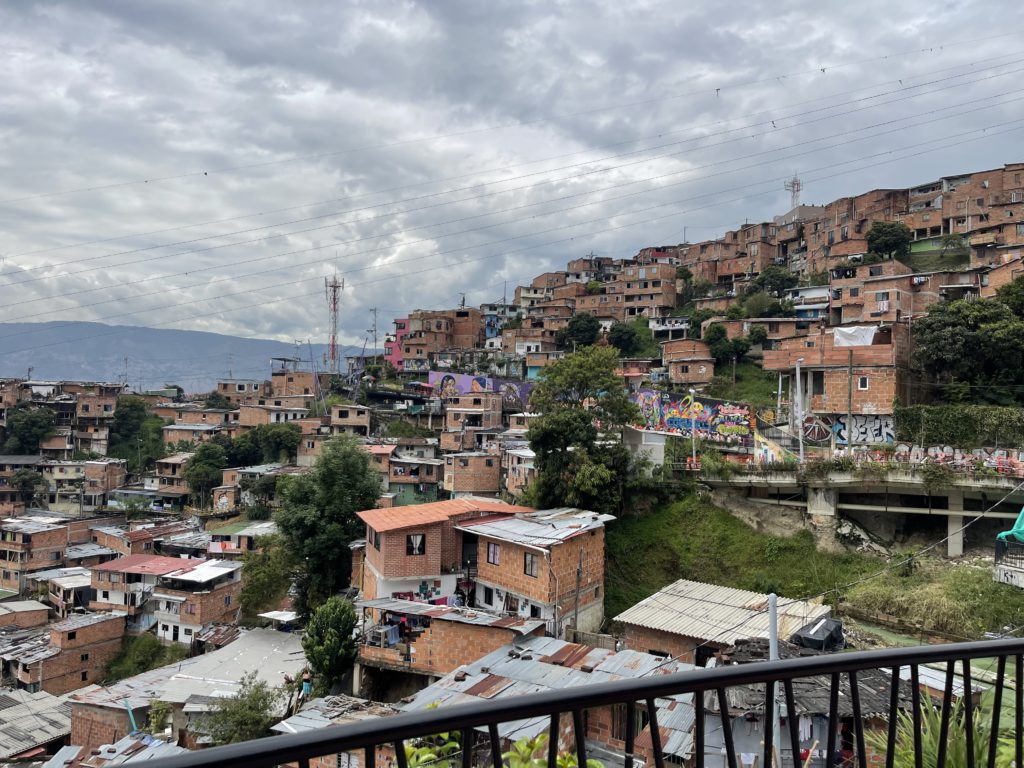
In 2002, the Colombian government implemented what is known as the Orión Operation in Comuna 13 to take back control of the neighborhood from the guerillas.
The Colombian Army, National Police, and intelligence agencies worked together to take down the guerillas.
This was a large undertaking, as the guerillas were heavily armed and had a strong hold on Comuna 13.
In order to carry out the operation, the Colombian Army used helicopters to bomb guerrilla strongholds and raid homes suspected of harboring guerrilla members.
However, while the intentions were good, the Orión Operation ended up causing more harm than good. In trying to take down the guerillas, innocent civilians and homes were destroyed.
Nonetheless, the operation successfully weakened the guerrillas’ hold on Comuna 13.
The Transformation of Comuna 13
Like any significant conflict, the Orión Operation left Comuna 13 in ruins. However, the Colombian government soon began to invest in the neighborhood to improve living conditions and create jobs.
In 2008, the Colombian government completed a cable car system that brought residents up the hill to the city center in just minutes. Prior to this, it would take residents up to an hour to make the trek up the hill.
The cable car system improved residents’ quality of life and helped boost the neighborhood’s economy.
Then in 2011, electric escalators were installed to help residents travel up and down the hill.
Another great improvement is Viaducto Media Ladera, a pathway connecting Comuna 13 with the surrounding neighborhoods. This has made it easier for residents to get around and has also helped reduce crime.
Comuna 13 became more accessible to tourists and businesses with these new transportation options, furthering its economic development.
The Art Tells the Story
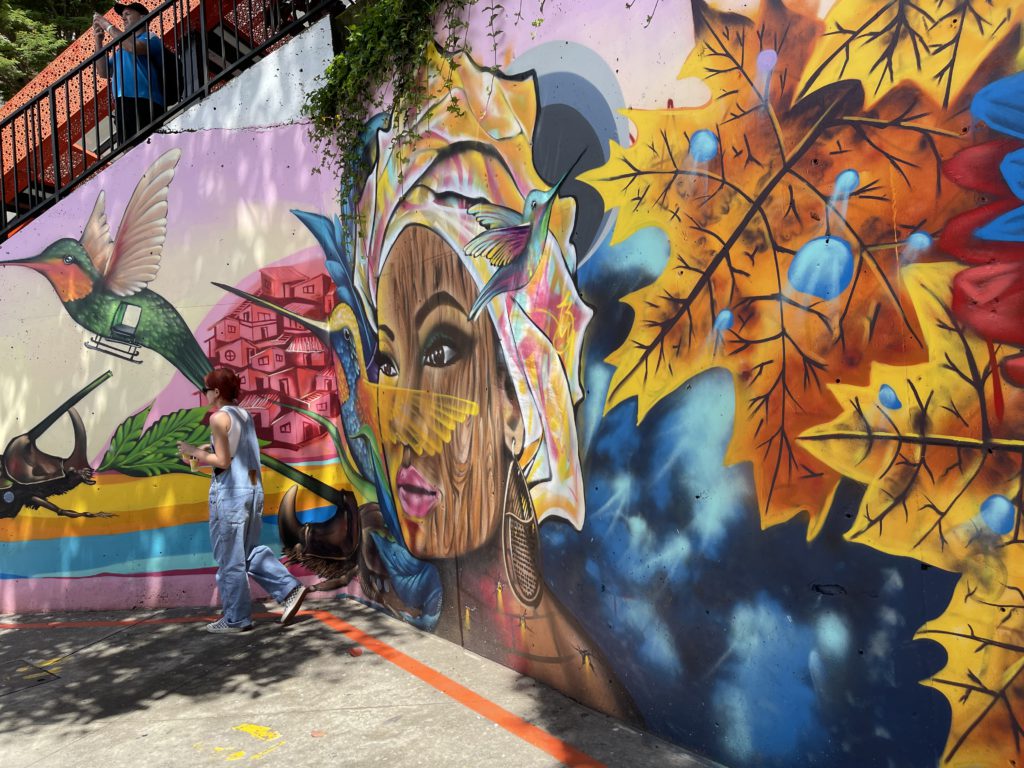
When taking a tour through Comuna 13, you’ll notice that the neighborhood is full of vibrant colors and murals.
Local artists created these murals to tell the story of Comuna 13 and its transformation from a war-torn neighborhood to a thriving community.
The art is breathtaking, and it’s amazing to see how far the neighborhood has come. More than likely, your tour guide will be a resident happy to share the history of Comuna 13 and show you around the neighborhood.
The stories you will hear are first-hand experiences of what it was like to live through the violence and how the community has transformed over the years.
Comuna 13 is an amazing example of how a community can come together to overcome adversity.
Comuna 13 has persevered despite the challenges and is now a thriving community filled with art, culture, and hope.
Can You Go Through Comuna 13 Without a Tour?
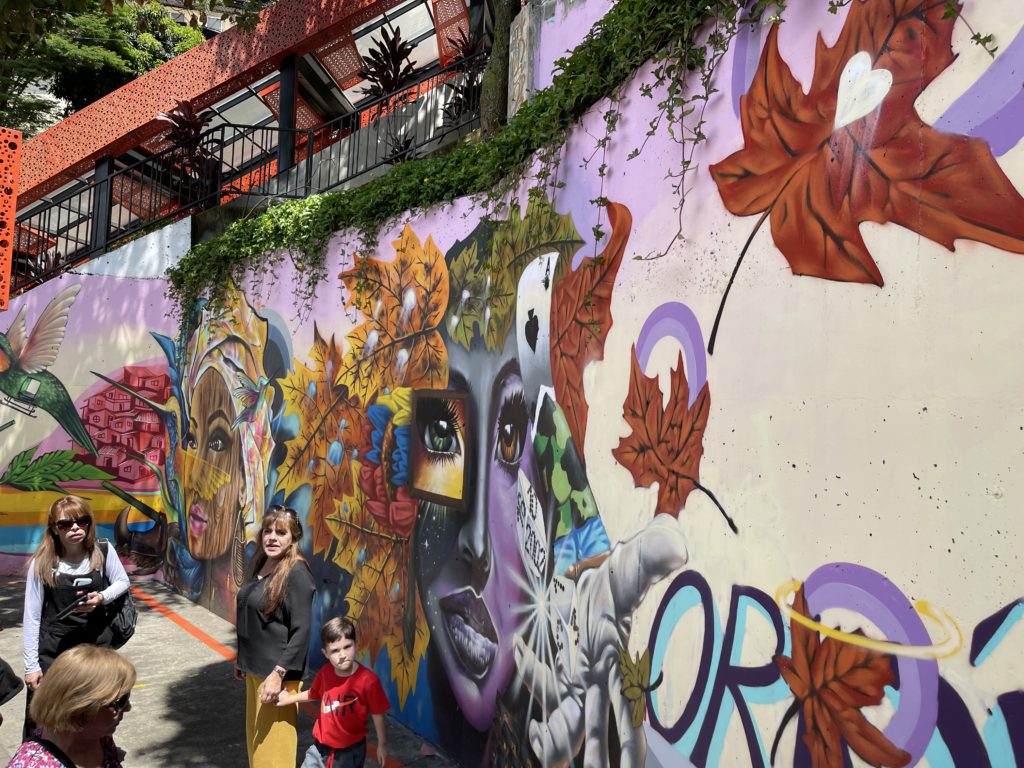
If you are trying to decide whether or not to take a tour of Comuna 13, the answer is yes; you can go without a tour.
However, we highly recommend taking a tour to learn about the neighborhood’s history and see the amazing artwork first-hand.
The tours are inexpensive and are led by residents passionate about their community.
Plus, the tours help support the local economy. Another thing to remember is that Comuna 13 is a maze on a steep hill.
If you don’t know your way around, it’s easy to get lost. So unless you are confident in your sense of direction, we recommend taking a tour.
If you decide to go without a tour, wear comfortable shoes and bring plenty of water.
When you get off the metro, you will need to then hop on a public bus which will take you to the entrance of Comuna 13.
Once in the neighborhood, you can easily follow the streets with other tourists.
Just be sure to stay aware of your surroundings and don’t take any unnecessary risks.
Comuna 13 is a safe place to visit, but it’s always better to be cautious when traveling to new places.
How Many Escalators Are There in Comuna 13?
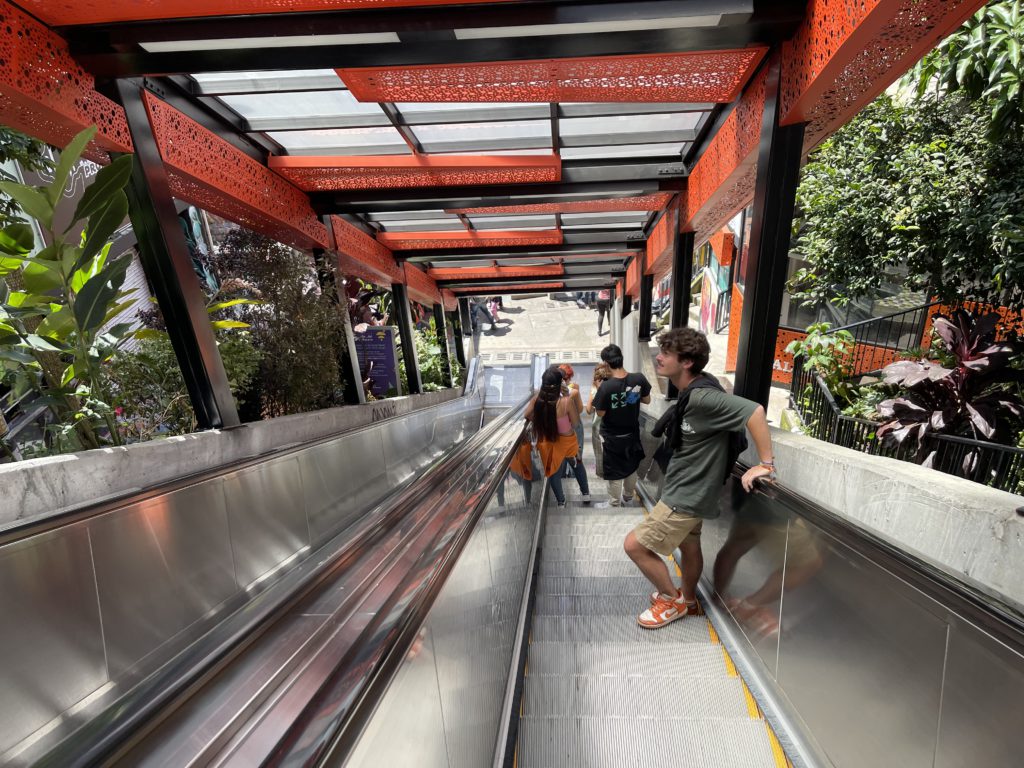
Currently, there are six escalators in Comuna 13. They are scattered across the neighborhood, and they are all free to use.
When you ride the escalators, it’s easy to imagine how hard it must have been for residents to make the trek up the hill before they were installed.
The escalators are just one of the many improvements that have been made in Comuna 13 over the years.
With each new improvement, residents’ quality of life gets better.
What Else Can You Do in Comuna 13?
One thing you will find in Comuna 13 is the welcoming spirit of the community.
The locals are proud of their neighborhood and happy to share it with visitors.
In addition to taking a tour, there are plenty of other things to do in Comuna 13.
You can visit the local market, try some traditional food, or take in the sights and sounds of the neighborhood.
If you are looking for art to take home with you, plenty of local shops sell paintings, murals, and other artwork.
You can also find souvenirs, such as keychains and t-shirts, featuring the Comuna 13 logo.
Also, there are restaurants with beautiful city views, so be sure to bring your camera!
While Comuna 13 is overall a safe place to go, some areas are still best avoided.
As with any big city, it’s always best to use caution when walking around at night and avoid any isolated areas.
If you go to a restaurant or bar at night, go with a group and stay together.
Also, keep your belongings close to you and don’t put your bag down in busy areas.
By following these simple safety tips, you can ensure that you have a fun and safe trip to Comuna 13.
When Is The Best Time To Go To Comuna 13?
If you can, the earlier in the day you go to Comuna 13, the better. With so much tourist traffic, the neighborhood can get pretty crowded later in the day.
The best time to visit is either in the morning or early afternoon. That way, you can avoid the worst of the crowds and still have plenty of time to explore everything Comuna 13 has to offer.
It can be hard to get pictures without other people in them if you go later in the day, so if you’re looking for some good photos, we recommend going early.
Discover the History of Comuna 13
Comuna 13 is a neighborhood with a rich history. It was once home to some of the most dangerous gangs in Medellin.
Now, Comuna 13 is a very different place. It’s been transformed into a vibrant community with plenty to offer tourists.
If you like this blog, you might like the Casacol Instagram page to keep up with all the new articles. Anything we need to update or correct? Care to contribute? Email us at blog@casacol.co

